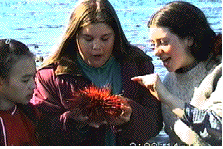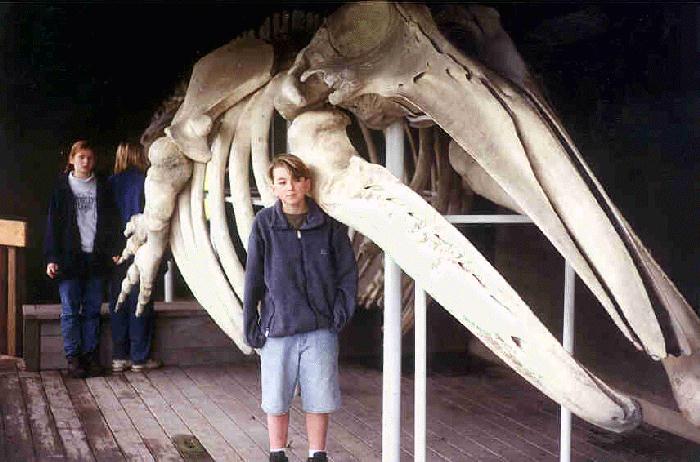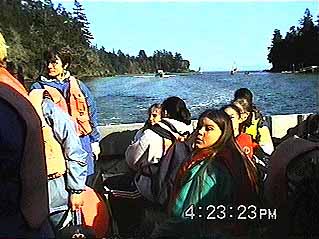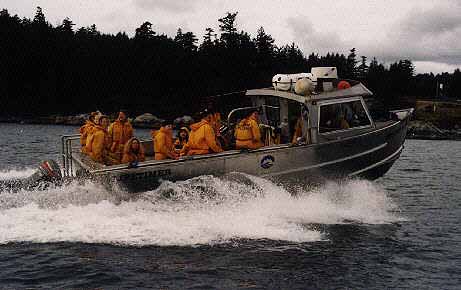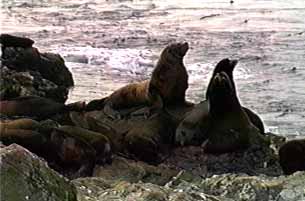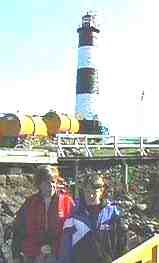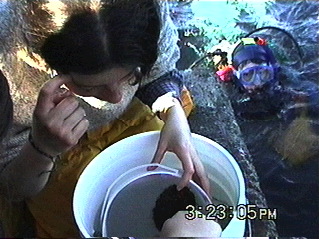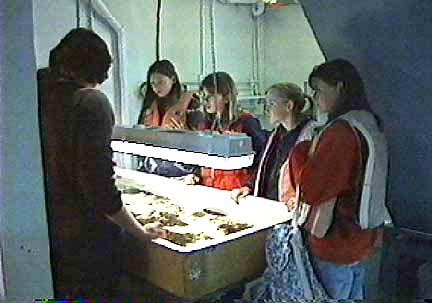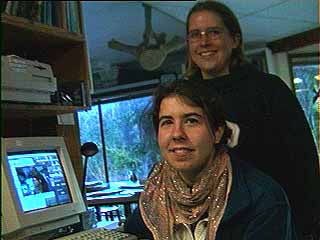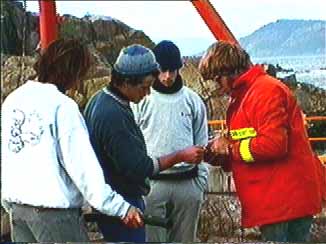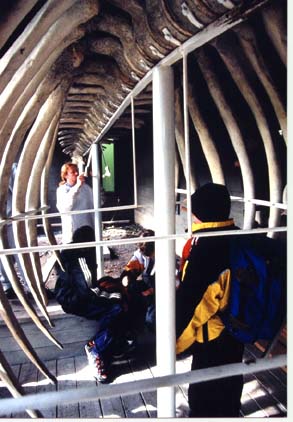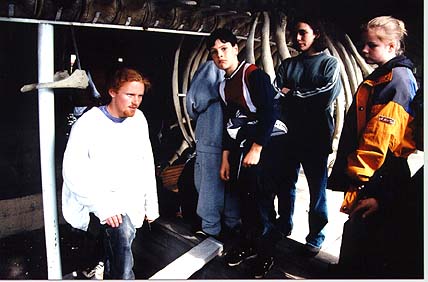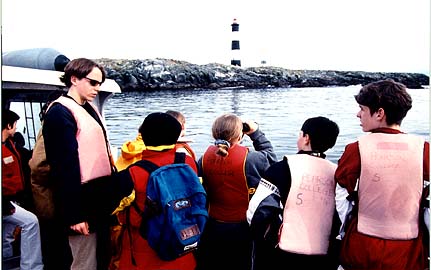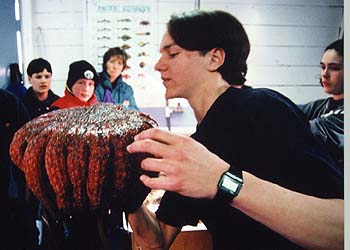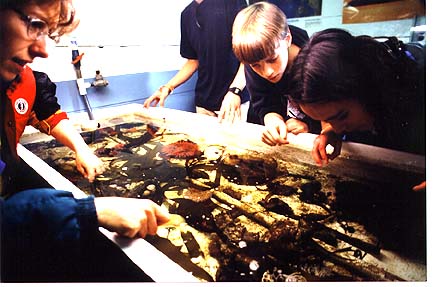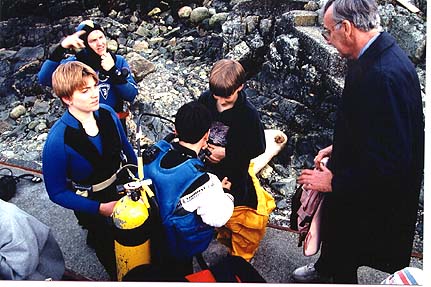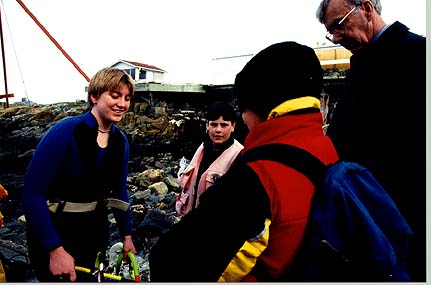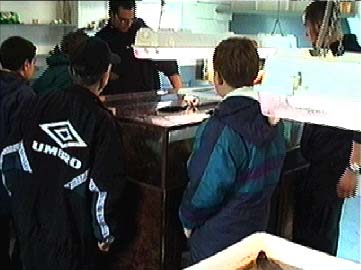On Wednesday 2 June 2004, the grade six students of Journey Middle School in Sooke visited the island and were given an explanation of how the island is maintained. They visited the marine science centre student residence and also ventured into the engine room. They were welcomed by students from Pearson College, Emmanuel, Paul and Michelle, who were staying on the Island for 2 weeks doing the Johann Ashuvud project. While there they participated in a live webcast.
Tag Archives: Schools Project
A school visit by Journey middle school students
The Johan Ashuvud Project June 2004
On 1st June 2004, during the Johan Ashuvud project, we had Dr Gitai Yahel and Russel Wyeth explain to the students and faculty from Journey Middle School in Sooke their research at Race Rocks . This was during a live webcast by Emmanuel (PC 30) from Ghana and Paul (PC 30) from Nigeria. Later we showed the students various living organisms in the tank room and gave the students a tour of the island.
Journey Middle School students visit Race Rocks
On 1st June 2004, during the Johan Ashuvud project we had Dr. Gitai Yahel and Russel Wyeth explain to the students and faculty from Journey Middle School in Sooke their research at Race Rocks . This was during a live webcast by Emmanuel (PC 30) from Ghana and Paul (PC 30) from Nigeria. Later we showed the students various living organisms in the tank room and gave the students a tour of the island. In those years, Pearson College students were part of the Schools Project whereby many schools in the Sooke School District would send their grade seven class on a field trip at the invitation of the Pearson College Diving Service.
Westmont Montessori Class Visits Race Rocks as part of our Schools Project
In June, 2002 the grade six students of Nadine Cruikshank’s class at Westmont Montessori school in Metchosin came out to Race Rocks to participate in a live webcast. Pearson College students Ben, Joe, Kiprop and former student Ryan who were staying at Race Rocks for the Johan Asuvud Race Rocks 2002 Project introduce them to the ecology and the history of Race Rocks. (17 minutes)
Westmont School visit June 2002
In June, 2002 the grade six students of Nadine Cruikshank’s class at West-Mont school in Metchosin came out to Race Rocks to participate in a live webcast. Pearson College students Ben,Joe, Kiprop and former student Ryan Murphy introduce them to the ecology and the history of Race Rocks. (17 minutes)
The Diving Service Schools Project 1999
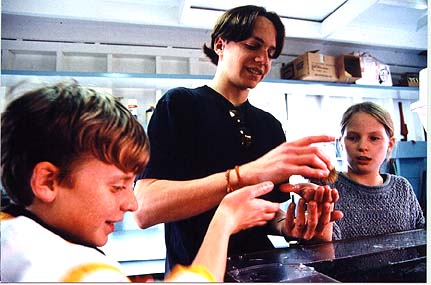 Link to our 1997-98 season of the Diving Service Schools Project.
Link to our 1997-98 season of the Diving Service Schools Project.
| In the spring term, 1999, the students of the Diving Service took groups of grade 7 students from the Sooke school district on field trips to the Marine Protected Area of Race Rocks Ecological Reserve. | |||||||||||||||||
GOALS OF THE DIVING SERVICE SCHOOLS PROGRAM:
In order to make the experience more enjoyable and informative for everyone, we suggest that the students do some research before coming on the field lab. It would make things more interesting if they could get a basic familiarity with some of the possible species in the different phylums which they will be seeing at Race Rocks.
|
The Schools Project Archive 1997-98
SCHOOLS FIELD LAB PROJECT: In the late 1990’s the Pearson College Diving Service ran a series of field trips involving students of grade seven classes in the Sooke School District.The field trips were to the Pilot Study Marine Protected Area of Race Rocks Ecological Reserve. The students of the Diving Service took responsibility for designing the curriculum, organizing the trips and conducting the field trips. The files below came from an earlier version of the Pearson College website. This page will show some of the images from those trips and the exercises the Diving Service members designed for the grade 7 students.
- In the fall of 1997, the members of the diving service worked to establish a wet lab in the old Workshop at Race Rocks.
- This involved moving two large touch tank-aquariums and installing a saltwater pump for the operation of the system.Local grade 7 students visit for a tour.
- Andrew gets the students to think about the size of the Gray Whale mounted on the campus before the students load onto the boat for their trip to the Ecological Reserve.
- On the way to the island, the boat stops at various islands to see the four species of marine mammal.
- The visiting grade seven students were rotated around to the different stations upon arrival at the island of Great Race Rock in the ecological reserve.
- Albert demonstrates marine invertebrates and their adaptions for feeding and locomotion , and Ragen urges the students top get a close up view of a sea star.
- Ragen urges the students top get a close up view of a sea star.
- Sarah showing members of Mr.Philion’s class of Wishart Elementary School, the operation of the SCUBA apparatus.
- The students take turns breathing compressed air and test the weight of the equipment.
- We were also able to get a group of Cubs from the local Metchosin community on a field trip to the island. Giovanni shows the cubs the invertebrates in the seawater tanks.
- Nick at the base of the light tower with a group touring the various systems that help to support the operation of the station.
A special thanks to Duane Prentice (PC year4), now a professional photographer working out of Victoria, who has contributed his time and energy to help us build up a set of pictures on Race Rocks. Most of the schools program pictures above have been supplied by him.

